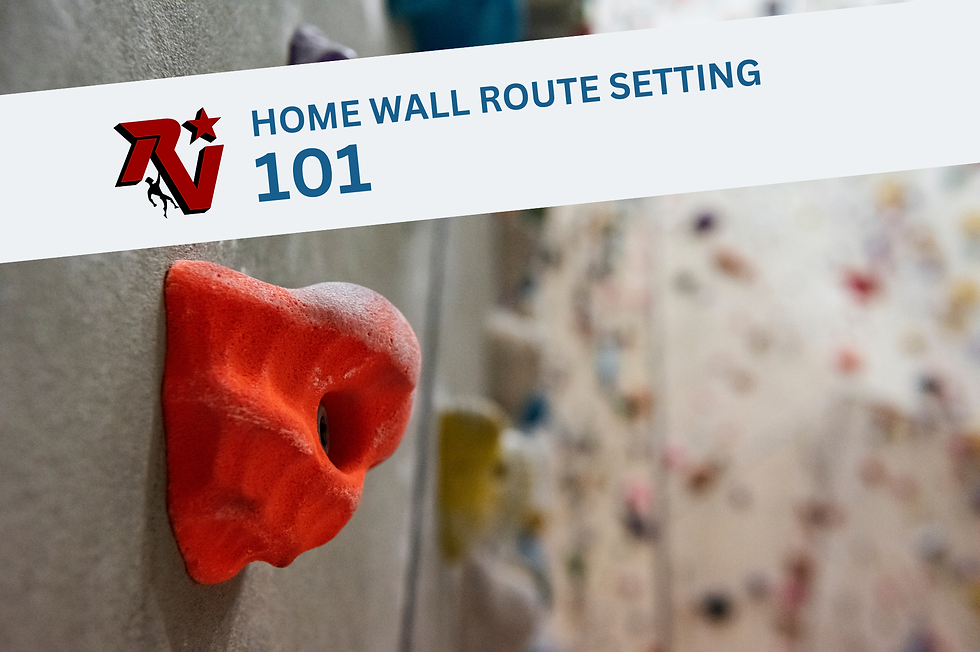Exercise for Climbing: The Importance of Yoga for Rock Climbers
- Dovi Hirsch
- Nov 7, 2021
- 3 min read
by Christopher Schafenacker

When climbers think of exercise for climbing, they think of hangboard training, campus board routines, and other exercises that directly benefit climbing musculature. This makes sense, as strong fingers and powerful pulling muscles are key to sending hard…and yet it’s not the whole picture. As any climber that has been in the game for long enough knows, healthy shoulders, robust stabilizers, and flexibility are just as crucial, which is why yoga (or yoga-inspired movement) is a key part of climbing training.
Before digging into why yoga should form part of any rock climbing workout routine, it is worth acknowledging that the Western world has co-opted yoga and severed it from its historic significance. Properly understood, yoga denotes a broad tradition of physical, mental, and spiritual practices originating in ancient India. In the twentieth century, aspects of this practice arrived to the U.S. largely thanks to the students of Sri T. Krishnamacharya, who placed special emphasis on the movement-based aspects of the tradition. This led to the popularization of Iyengar, Ashtanga, and Hatha Yoga, which all give pride to the asanas—or postures—leading these to become synonymous with yoga, itself, in most Westerners’ minds. This aspect of the tradition is that which directly benefits climbing, and thus when we say “yoga” we really just mean the yoga-inspired sliver of the ancient tradition we’ve collectively re-branded.
Yoga as Exercise for Climbing
Climbing ruins your shoulders. It puts undue strain on connective tissue. It drives overdevelopment of the latissimus dorsi muscles leading to the dreaded climber’s hunch. It causes SLAP tears like Beyoncé causes booty shaking. And if you do nothing about all of this, it will probably ultimately (and ironically) cause the end of your climbing career. Yoga addresses many of these issues, which is why the practice should be as much a part of your climbing training as hangboarding or any other rock climbing workout routine. To understand this it helps to review the sun salutation (Surya Namaskar), a basic sequence of movements common to most Western forms of yoga.
A sun salutation begins with tadasana, a standing posture that emphasizes opening the chest rolling the shoulders back, and allowing the scapula to slide down along the spine. Three asanas follow which involve reaching up, folding forward, rising to the midpoint, and then ultimately jumping back into Chaturanga Dandasana. This latter posture requires the practitioner to lower into a triceps push up before extending into upward dog, or Urdhva Mukha Svanasana. The sequence of movements which lead to this point in the sun salutation require a combination of wrist and shoulder stability, hamstring flexibility, and chest and core strength. Upward dog emphasizes opening and stretching of the pectoral muscles and rotator cuff while the subsequent downward dog (Adho Mukha Svanasana) stretches the upper back, shoulder, and hamstrings once again. A sun salutation then closes with a repetition of the initial postures in reverse order.
The purpose of describing this basic sequence is to illustrate how yoga works to compensate for the muscular imbalances provoked by climbing. An open chest, strong, stable, and flexible shoulders, a straight back, flexible hamstrings, and open hips are core features of many asanas. Accordingly, practice of these postures offers indispensable benefit to climbers who wish not only to avoid injury, but also to increase the mobility required of hard climbing.
A yoga practice is not just a great complement to our sport, then, but an exercise for climbing as much as any other that allows you to climb for life and reach your maximum potential.
Featured Climbing Training Gear
*NEW* The Rocketeer Wall: our free-standing adjustable solution for those who can’t mount a hangboard anywhere in their home or apartment—or who are limited on space. The Rocketeer gives climbers the additional option to set specific climbing holds. Recreate the crux holds of your proj and get ready to send, bruh.
The Rocket Wall: Available in 6’ and 8’ widths, it’s been tough for us to keep up with the demand for this innovative home climbing wall solution. Slightly overhanging, the Rocket Wall is big enough to set routes on, or to build a systems board.
The Rock-Stah: Our handcrafted version of a traditional hangboard, with curving crimp rails to help alleviate unnecessary strain on your pulleys. Because ain’t no one got time for a finger injury…










Comments